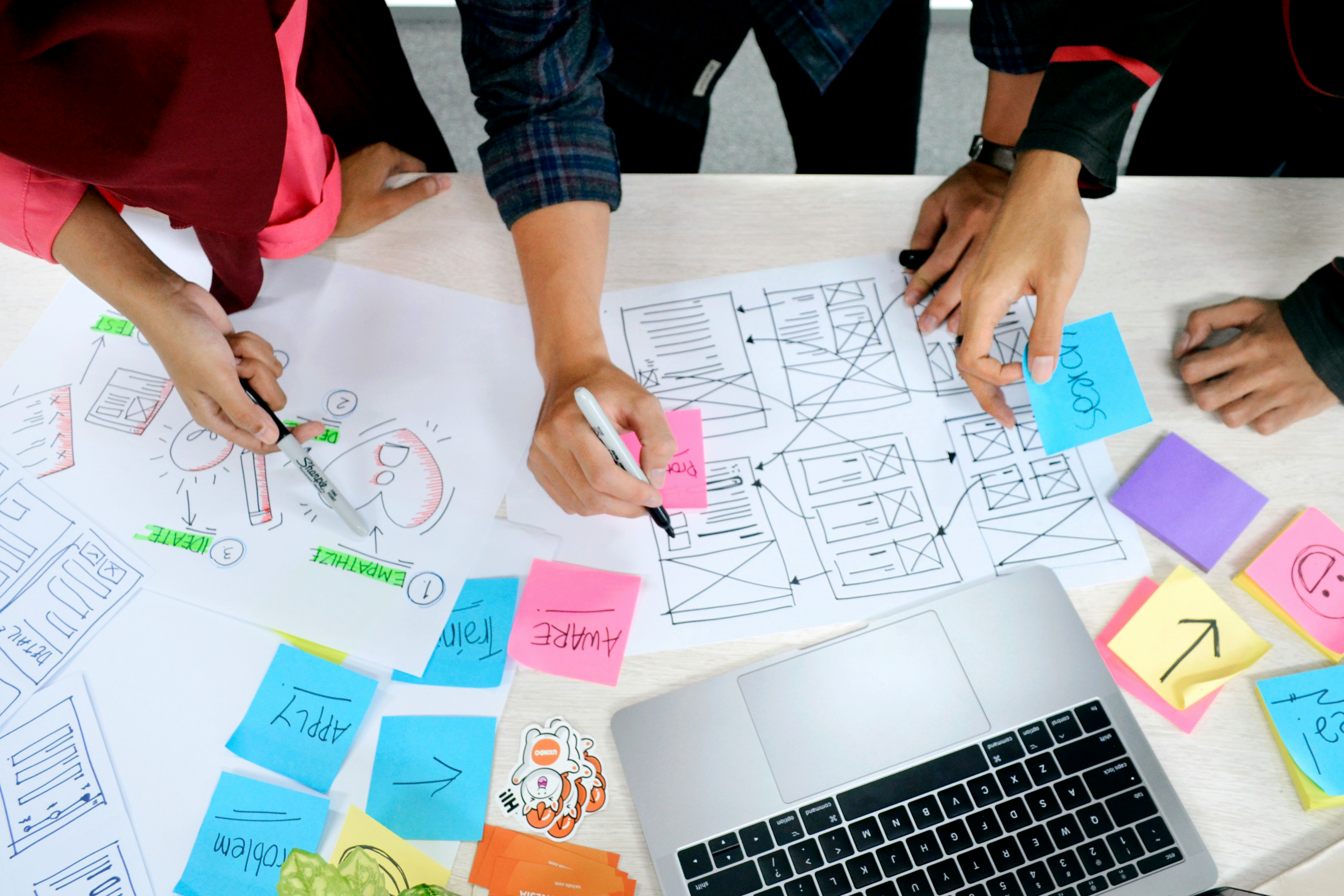NFN Labs' Design and Development process
How to turn your product ideas into reality
NOV 11 2022 • Sonaal Bangera
Creating something new is challenging, no matter how much experience you have. The design and development process is where many projects break down. Developing a product is an iterative process with many checkpoints along the way to ensure that your finished product meets your expectations and the expectations of your target audience. Every project takes careful planning, attention to detail, and a lot of hard work. But with the right planning and preparation, you can increase the likelihood that your product will be a success.
We have been using this process at NFN Labs for the last 11 years and it has worked well for us. This blog post details how to make sure your design and development process succeeds – so you can get back to focusing on what matters: creating something amazing for your customers.

Ask yourself the right questions
It’s a good idea to start by asking yourself a few key questions before diving straight into the design and development process. These questions will help you lay the foundation for your project, and can be applied to any situation, regardless of the type of product you’re creating. - What are you trying to achieve? - What problems are you trying to solve? - What is your target market? - Who will use your product? - What do you want your product to do for your customers? - What are the benefits of your product? - Who do you want to exclude from using your product? - What key features and functionality do you want to include in your product?
Define your product requirements
For each question, you’ll need to clarify the details behind each requirement. We call this phase 'User experience definition'.
If you’re working on a new product or application, start by creating a product requirements document (PRD). This will help you record everything you need to know about your project before you jump into the design and development process. If you’re working on a redesign of an existing product, you can use the PRD to capture your design requirements. A PRD is a great way to document everything you think you’ll need to know in order to create a successful product design.
In this phase, we are trying to understand all the unknowns. Who are the users of the system, what are their roles and responsibilities? How do they navigate most effectively in the system we are building? We do this by building broad user journeys and mindmaps.
Conduct user research
The best way to understand your customers is to talk to them. As you’re developing your product requirements, you’ll want to research your customers’ behaviours, needs, and expectations. This will help you create a product that is tailored to your audience – and it will make your product more successful. We also capture all ideas and areas of interests in something called a moodboard. This helps to align all stakeholders to the big picture and narrow down to a direction we all agree with.
With this information we define wireframes, detailed workflows (connections of wireframes) and a style guide. The style guide defines the overall style in terms of the color palette, typography and iconography and brings consistency throughout the product across different touch points like the website, apps, email, social media etc.
These phases of understanding user journeys, user research and moodboards, wireframes, detailed workflows and the style guide together from the foundation of the product.

DEVELOP MVPs
An MVP – or minimum viable product – is a basic version of your product that you can use to start collecting feedback. We like to call it the minimum delightful product. By taking inputs from product requirements and user research we start adding life to the idea through interface design and development.
Interface design includes designs across different platforms like web, mobile apps etc based on the business idea, Interaction design where applicable and pixel perfection. Once complete there is a handoff to the development team.
The development team goes through phases of Backend architecture design, API design, App development (Web, mobile, watch etc), Quality assurance, User acceptance testing and finally deployment.
There are many methods for creating MVPs, and you can choose the one that best suits your particular situation. It’s important to remember that you don’t want to create the finished product with all its bells and whistles. You’re developing a basic prototype to receive feedback on your core functionality. You can even create multiple MVPs, each designed to test specific functionality. This will help you get feedback on the different aspects of your product sooner.
CONFINE YOURSELF TO A SINGLE LANE
Sometimes, especially during the beginning phase of your project, it can be easy to get distracted. Not only do you have to focus on your core functionality, but you also need to consider how that functionality will be delivered. The best way to stay focused is to create a road map that includes all the different aspects of your project – from ideation to delivery. This road map will help you keep your team and stakeholders informed about your progress, and it will help you stay on track throughout the entire project. You’ll also want to create a timeline that includes an overview of each phase of your project and each team member’s responsibilities. This will help you keep on track while you’re working toward your project milestones.
WRAPPING UP
The design and development process is challenging, but it’s also rewarding. By following a proven process and focusing on your customers’ needs, you’re more likely to create a product that they will love. We have followed the same process and shipped world class products. We want to use these learnings and help you to bring your ideas to life in the best possible way.
Tags: Process • MVP • Getting Started


